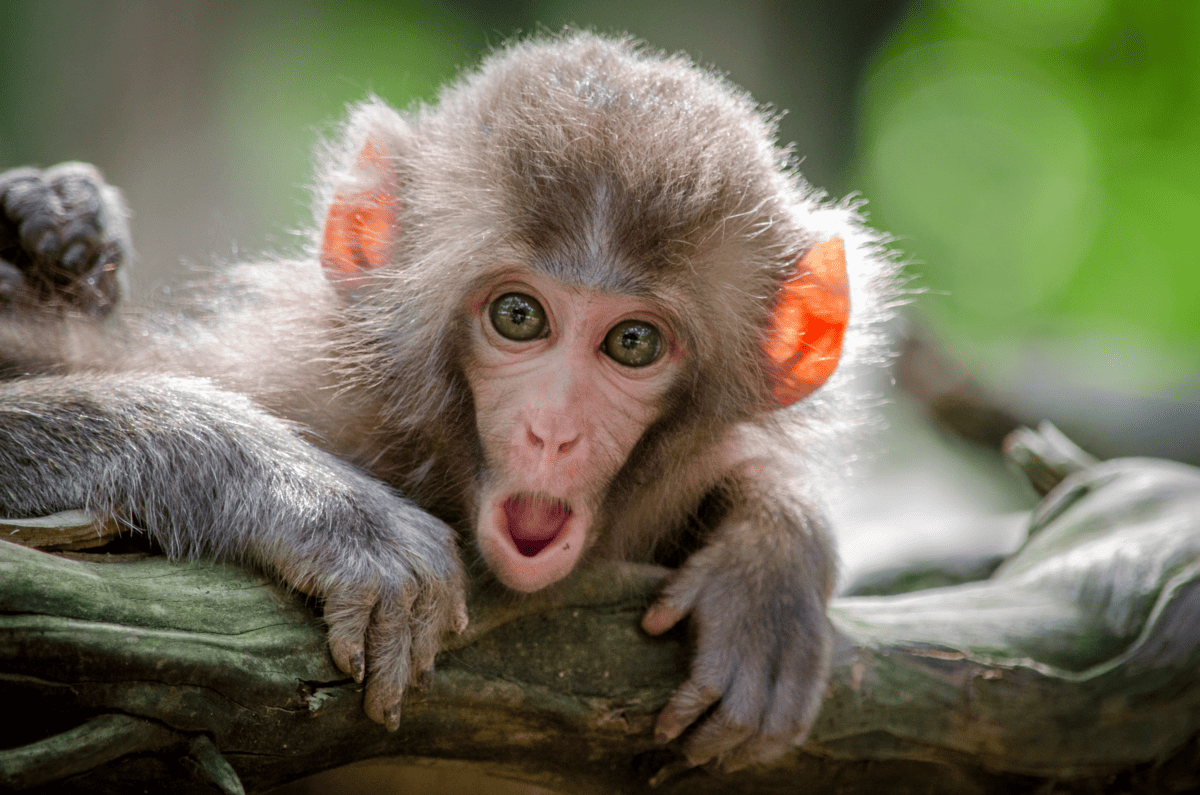For centuries, humans have wondered about the emotional lives of animals. Do they feel joy, fear, grief, or love? While philosophers and animal enthusiasts have long believed that animals experience rich emotional lives, scientific validation has been slower to emerge. Today, cutting-edge research is revolutionizing our understanding of animal emotions through sophisticated technology, observation techniques, and interdisciplinary approaches. Scientists are now uncovering compelling evidence that animals across the evolutionary spectrum experience complex emotions, sometimes in ways surprisingly similar to humans, while in other cases through mechanisms uniquely adapted to their species. This expanding field of study is not only reshaping our scientific understanding but also carries profound implications for animal welfare, conservation efforts, and our ethical relationship with the animal kingdom.
The Evolution of Animal Emotion Research

The scientific study of animal emotions has undergone a remarkable transformation over the past century. In the early 20th century, behaviorism dominated animal science, with researchers like B.F. Skinner rejecting the study of animal emotions as unscientific. During this era, any suggestion that animals experienced feelings was dismissed as anthropomorphism – the attribution of human characteristics to non-human entities. Scientists were trained to describe animal behavior in mechanistic terms, focusing solely on observable actions rather than internal states.
The paradigm began shifting in the 1960s and 1970s when pioneers like Jane Goodall documented emotional behavior in chimpanzees, challenging the scientific establishment. Her observations of chimps embracing, grieving, and displaying joy brought emotional lives of animals into scientific discourse. By the 1990s, neurobiologist Jaak Panksepp was mapping emotional circuits in mammalian brains, discovering shared neural pathways for emotions like fear, rage, and play across species. Today, animal emotion studies have gained legitimacy, with prestigious journals publishing research on animal feelings and dedicated departments at major universities exploring animal consciousness and emotion. This evolution represents not just a scientific shift but a fundamental reconsideration of our relationship with other species.
The Neuroscience of Animal Emotions

The biological foundations of emotions are remarkably similar across many species, particularly mammals. Neuroimaging studies have revealed that emotional processing occurs in evolutionarily ancient brain structures that humans share with many other animals. The amygdala, for instance, plays a crucial role in fear processing in humans, rodents, and other mammals. Similarly, the mesolimbic dopamine system, which is associated with pleasure and reward in humans, functions comparably in other vertebrates.
Scientists have identified seven primary emotional systems that appear to be conserved across mammalian brains: SEEKING (anticipation/desire), RAGE (anger), FEAR (anxiety), LUST (sexual desire), CARE (nurturing), PANIC/GRIEF (separation distress), and PLAY (social joy). These systems involve distinct neural circuits and neurochemicals. For example, oxytocin, often called the “love hormone” in humans, plays similar roles in maternal bonding and trust across mammals. Brain activity patterns during emotional states in animals often parallel those seen in humans experiencing similar emotions. This neurobiological evidence strongly supports the idea that animals experience emotions in ways that, while not identical to human experiences, are genuine, complex, and significant to their lives.
Facial Expressions and Body Language

Animals communicate emotions through intricate systems of facial expressions and body language, many of which are now being systematically documented by researchers. The Facial Action Coding System (FACS), originally developed for humans, has been adapted for various species, creating tools like ChimpFACS, DogFACS, and HorseFACS. These systems map the specific muscle movements that create emotional expressions, allowing for objective measurement and comparison across individuals and contexts. Studies using these tools have revealed that many species have remarkably nuanced facial expression capabilities – horses can produce 17 distinct facial actions, while dogs can create 27.
Body posture also conveys crucial emotional information. A 2017 study published in Scientific Reports found that dogs’ body language is so expressive that human observers could accurately identify emotions including joy, fear, anxiety, and relaxation based solely on silhouettes of dog postures. Tail position in many mammals serves as an emotional barometer – the classic wagging tail of a happy dog contrasts with the tucked tail of a frightened one. Piloerection (hair standing on end) often signals fear or aggression across mammalian species. These physical expressions aren’t merely reflexive; they serve as sophisticated communication systems within species and, as many pet owners can attest, across species boundaries as well. Recent research has even found that some animals modify their expressions when they know they’re being observed, suggesting these signals are often intentional communication rather than just involuntary responses.
Vocalizations as Emotional Expressions

Vocalizations represent one of the most direct and evolutionarily ancient ways animals express their emotional states. Scientists have made remarkable progress in decoding these acoustic signals across species. Research led by Dr. Elodie Briefer at the University of Copenhagen has demonstrated that mammals produce similar types of calls when experiencing comparable emotional states – high-pitched, tonal sounds often signal positive emotions, while harsh, low-frequency calls typically indicate negative states. This pattern appears consistent across species as diverse as pigs, horses, and goats.
Using sophisticated spectral analysis and machine learning algorithms, researchers can now identify emotional content in animal vocalizations with unprecedented accuracy. A 2019 study published in Bioacoustics found that artificial intelligence could correctly classify the emotional context of pig vocalizations with over 90% accuracy. Similar advances have been made in understanding companion animals – researchers have identified distinct acoustic signatures in cat purrs when they’re soliciting food versus expressing contentment. Perhaps most fascinatingly, scientists studying African elephants have documented specific alarm calls that not only warn of danger but differentiate between threats (separate calls for bees versus humans). Prairie dogs have similarly complex vocal systems, with calls that describe specific predators including details about size, shape, and color. These findings suggest that animal vocalizations aren’t merely reflexive emotional expressions but can contain specific semantic content – blurring the line between emotional expression and language.
Chemical Communication of Emotions

Many animals communicate their emotional states through chemical signals, a mode of expression that often goes unnoticed by humans due to our relatively limited sense of smell. Pheromones – chemical substances released by an animal that affect the behavior or physiology of others of the same species – play a crucial role in emotional signaling. When animals experience strong emotions like fear or sexual arousal, they release specific chemical compounds that can be detected by conspecifics, sometimes over remarkable distances.
Research has shown that rodents release alarm pheromones when frightened that trigger anxiety-like behaviors in other rodents. These chemical warning systems represent a form of emotional contagion, allowing rapid transmission of threat information through a group. In a remarkable 2020 study published in Nature Neuroscience, researchers identified specific neurons in mouse brains that respond exclusively to fear pheromones from other mice. Similar chemosensory communication has been documented in numerous species including elephants, who can detect chemical signals in urine that indicate whether another elephant is in a state of musth (heightened testosterone and aggression), and honey bees, who use pheromones to communicate alarm throughout the hive. Even aquatic animals employ chemical signaling – studies have shown that fish release “alarm substances” when injured that cause fear responses in other fish. These chemical conversations represent a rich emotional language largely invisible to human perception but fundamental to many animals’ social and emotional lives.
Grief and Mourning Behaviors

Among the most poignant emotional behaviors observed in animals are responses to death, particularly the loss of social companions or offspring. Compelling evidence of grief-like behaviors has been documented across a range of species. Elephants are known to perform what researchers call “death rituals” – they will gather around deceased herd members, touch the body with their trunks, sometimes cover it with branches, and may revisit the site for years afterward. A systematic review of elephant mourning behavior published in the journal Primates documented over 30 cases of elephants showing intense interest in the bones of deceased conspecifics, specifically elephant bones rather than those of other species.
Primates exhibit particularly striking mourning behaviors. Jane Goodall’s observations of the chimpanzee Flint, who stopped eating and died shortly after his mother’s death, provided an early documented case of apparent grief in non-human animals. More recently, researchers have observed baboon mothers carrying their dead infants for days or even weeks, a behavior also seen in dolphins, orcas, and other cetaceans. In 2018, an orca named Tahlequah (J35) carried her dead calf for 17 days over 1,000 miles, a case that received international attention. While scientists remain cautious about attributing human-like grief to these behaviors, the neurobiological similarities between humans and these species, combined with the specific and prolonged nature of their responses to death, strongly suggest that many animals experience some form of grief. These observations challenge us to reconsider the uniqueness of human emotional experiences and raise important ethical questions about our treatment of highly social animals.
Play as an Emotional Expression

Play behavior represents one of the most visible expressions of positive emotion in the animal kingdom. Far from being limited to domesticated animals or primates, play has been documented in birds, reptiles, fish, and even some invertebrates. This widespread occurrence suggests play fulfills fundamental emotional and developmental needs across diverse species. Play behavior typically decreases when animals are stressed, ill, or nutrient-deprived, indicating it’s a luxury that emerges primarily when more basic needs are satisfied – making it a potential indicator of positive welfare.
Scientists have identified several distinct categories of animal play: locomotor play (running, jumping, pirouetting), object play (manipulating items with no immediate practical purpose), and social play (play fighting, chasing, and other interactions with conspecifics). Each type appears to serve different developmental functions while also providing apparent emotional satisfaction. Ravens have been observed sliding down snowy slopes repeatedly, only to fly back up and slide down again – behavior with no survival benefit that strongly suggests they find it enjoyable. Similarly, octopuses in laboratory settings have been documented playing with objects, repeatedly releasing toys into currents and retrieving them. Perhaps most tellingly, research has found that rats emit ultrasonic vocalizations during play that are analogous to human laughter, and they will perform work to gain access to play opportunities, indicating they find it intrinsically rewarding. Play behaviors across species are characterized by exaggerated movements, self-handicapping (stronger animals restraining their strength), and play signals that communicate “this is not serious” – all pointing to play as a sophisticated emotional expression that balances arousal with security.
The Social Dimension of Animal Emotions

Many animal species display emotional responses that are deeply embedded in their social relationships, demonstrating that their emotional lives extend beyond immediate physical needs. Researchers have documented numerous examples of emotional contagion – the spread of emotions between individuals – across species. In a 2020 study published in Animal Cognition, researchers found that pigs not only recognize emotions in their companions but also synchronize their emotional states, with stress in one animal quickly spreading to others nearby. Similar patterns appear in many social species, from flocking birds to schooling fish.
Beyond simple emotional contagion, some species show evidence of more complex empathic responses. Rats will work to free trapped companions even when there’s no reward for doing so, and they’ll even share food with hungry conspecifics, demonstrating what appears to be compassionate behavior. Primates show some of the most sophisticated social emotions. Studies have documented what appears to be fairness concerns in capuchin monkeys, who will reject rewards if they see companions receiving better treats for the same task. Consolation behavior – where animals comfort distressed group members through physical contact – has been observed in great apes, elephants, corvids, and canids. These social dimensions of animal emotion suggest that for many species, emotional lives are intertwined with social relationships in ways remarkably similar to human social emotions. As Professor Frans de Waal, a pioneering primatologist, has argued, many social emotions previously considered uniquely human – empathy, gratitude, resentment, and solidarity – likely have evolutionary precursors in other social species.
Measuring Emotions: New Scientific Approaches

Historically, one of the greatest challenges in animal emotion research has been measurement – how can scientists objectively assess what an animal is feeling? Recent technological and methodological advances have transformed this field. Cognitive bias testing represents one innovative approach, based on the principle that emotions influence judgment and decision-making. In these tests, animals are trained to associate one cue with a positive outcome and another with a negative or neutral outcome. When presented with ambiguous, intermediate cues, their responses reveal their emotional states – optimistic animals tend to respond to ambiguous cues as if they were positive, while pessimistic animals treat them as negative. This method has successfully detected emotional states across species from bees to bears.
Physiological measurements offer another window into animal emotions. Heart rate variability, cortisol levels, body temperature changes, and other biomarkers can indicate emotional arousal and valence (positive vs. negative emotions). Infrared thermography now allows researchers to detect subtle temperature changes associated with emotional states without invasive procedures. Perhaps most exciting is the application of neuroimaging technologies to study animal emotions. Functional MRI has been used with trained dogs to observe brain responses to various stimuli, showing activation patterns similar to humans when processing emotional information. Electroencephalography (EEG) has revealed that horses show asymmetric brain activity during positive versus negative emotional states. Even consumer-grade technology is finding applications – researchers have adapted fitness trackers to monitor emotional arousal in various species, creating opportunities for continuous emotion monitoring outside laboratory settings. These objective measurement techniques are helping transform animal emotion research from anecdotal observations to rigorous science, though researchers emphasize that multiple measurement approaches should be combined for the most accurate assessment of animal emotional states.
Emotional Lives of Unexpected Species

While emotions in mammals with large brains might seem intuitive, recent research has uncovered evidence of emotional experiences in species traditionally considered more primitive or simple. Fish, long thought to lack the neural complexity for emotions, have been the subject of paradigm-shifting research. Studies led by Dr. Culum Brown at Macquarie University have demonstrated that fish possess the neurological components needed for emotional processing, including structures homologous to the mammalian amygdala. Fish show physiological stress responses, learn to avoid frightening stimuli, and display individual personalities that influence their emotional reactivity. Some species, like cleaner wrasse, have even passed modified versions of the mirror self-recognition test, suggesting levels of self-awareness previously thought impossible for fish.
Even more surprisingly, evidence for basic emotional states has emerged in invertebrates. Bees exhibit pessimistic cognitive biases when agitated, responding to ambiguous stimuli as if they were negative. Crayfish show anxiety-like behavior when exposed to stress, and this behavior is reduced when they’re given anti-anxiety medications that work on humans. Perhaps most remarkably, octopuses – whose nervous systems evolved entirely independently from vertebrates – display complex emotional behaviors including apparent joy during play, fear responses to threats, and even what some researchers interpret as boredom when understimulated in captivity. These discoveries challenge traditional hierarchical views of emotional capacity based on evolutionary relatedness to humans and suggest that emotions may have evolved independently multiple times because they serve crucial functions in navigating complex environments. As Dr. Donald Broom, emeritus professor of animal welfare at Cambridge University, has argued, any animal with sufficient cognitive complexity to have awareness of its surroundings likely has the capacity for at least basic emotional states – a perspective that dramatically expands the range of species we should consider as emotional beings.
Implications for Animal Welfare

Our expanding understanding of animal emotions is profoundly reshaping approaches to animal welfare. Traditionally, animal welfare focused on basic physical needs – adequate food, water, shelter, and disease prevention. While these remain essential, the scientific validation of animal emotions has shifted the paradigm toward also considering psychological well-being. Modern welfare frameworks increasingly incorporate concepts like positive emotional states, natural behavior expression, and cognitive enrichment as essential components of humane care.
This evolution is driving concrete changes across various sectors. In agriculture, recognition of emotions in livestock has led to improved housing systems that allow for social interaction, play, and exploration. For example, the European Union has implemented welfare regulations requiring enrichment materials for pigs based on evidence of their emotional needs. Zoos and aquariums have transformed care practices, developing sophisticated environmental enrichment programs designed not just to prevent negative states like boredom and frustration but to promote positive emotions through choice, control, and appropriate challenges. In laboratory settings, the acknowledgment of animal emotions has influenced research protocols, with growing emphasis on refinement techniques that minimize distress and guidelines that consider the emotional impacts of procedures. Perhaps
- How Animals Express Emotions: What Scientists Are Discovering - August 13, 2025
- Great Barrier Reef Faces Biggest Threat from Hottest Ocean Temperatures in 400 Years - August 13, 2025
- Deforestation Threatens Wildlife, But Some Species Adapt in Surprising Ways - August 13, 2025

